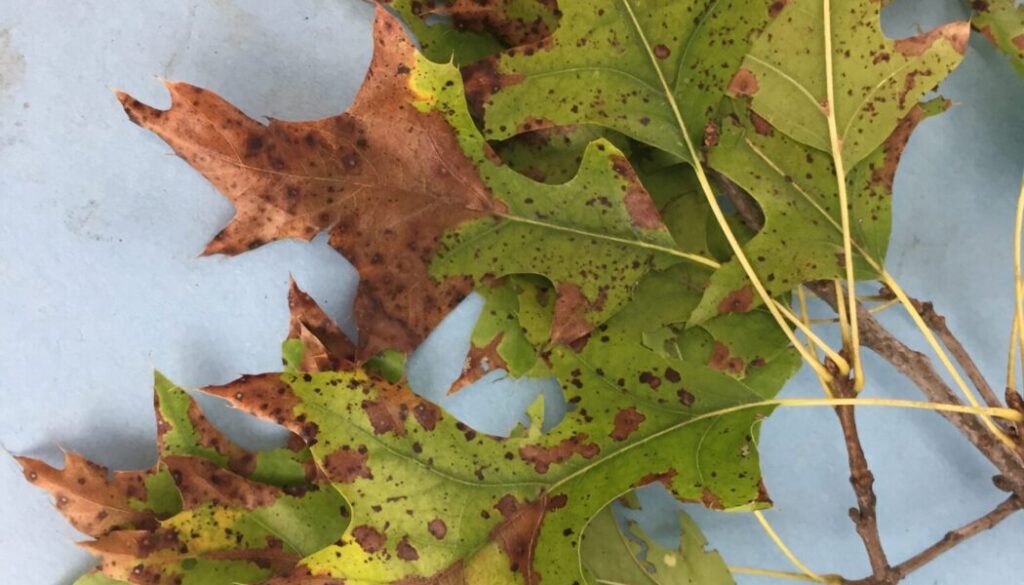Bur Oak Blight
Bur Oak Blight
Bur Oak Blight is a fungal disease that is relatively new to our area and that we should be aware of. The blight first appears in June as purple-brown spots on the underside of Bur Oak leaf veins. In July, the spots expand, and purplish necrotic veins become noticeable on the upper leaf surface. Leaf veins are killed as the infection progresses and a characteristic wedge-shaped necrotic area develops on the leaf blade. The trees have a scorched appearance with the disease typically worse on the bottom branches and progressing upwards over time. The pathogen overwinters on the diseased leaf petioles. Spores are released from this area in the spring as the new oak leaves are developing and expanding. Quercus macrocarpa. var. oliviformis (a small acorn variety) is the most susceptible to the disease. Highly resistant Bur Oaks have been observed growing right next to heavily infected individuals. So attention should be paid to these superior trees for future cultivar selection
Symptoms of bur oak blight Leaf symptoms include necrosis (death) of the tissue along the veins and wedge-shaped areas of browning at the tips or sides of the leaves. Severely affected trees may die after several years of severe defoliation. The disease tends to intensify year-to-year in individual trees, and if only a portion of the crown is affected, it usually starts in the lower branches and then later progresses up the tree.
Management of bur oak blight Fungicide treatments has shown promise in preliminary studies. Application (injection) is recommended after full leaf expansion in the spring (late May, early June) to slow down the transition of the pathogen from dormant infection (endophytic) to actively causing symptoms. For more information call Johnson Ops Tree Care at 608 526-6297 for a health assessment. Our ISA Certified Arborist can help get your landscape on the right track with our PHC ( Plant Healthcare) procedures




